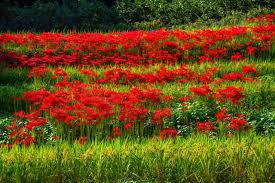
Flowers are not only exquisite natural wonders but also vital components of ecosystems, playing crucial roles in pollination, biodiversity, and ecological balance. However, many rare and unique flower species face threats from habitat loss, climate change, overexploitation, and invasive species. To prevent the decline of these precious floral treasures, urgent conservation efforts are imperative. Let’s explore essential conservation measures to safeguard rare and endangered flower species from extinction.
**1. Habitat Protection and Restoration:**
Preserving the natural habitats of rare flowers is paramount to their survival. Conservation organizations and government agencies must establish protected areas, such as national parks, reserves, and botanical gardens, to safeguard the diverse ecosystems that rare flowers inhabit. Additionally, habitat restoration projects, including reforestation, wetland rehabilitation, and native plant reintroductions, can help revitalize degraded habitats and create suitable environments for rare flowers to thrive.
**2. Legal Protection and Regulation:**
Enacting and enforcing laws and regulations to protect rare flower species and their habitats is critical. Governments must establish comprehensive conservation laws, including species protection acts, habitat conservation plans, and regulations on harvesting and trade. International agreements, such as the Convention on International Trade in Endangered Species of Wild Fauna and Flora (CITES), provide frameworks for regulating the international trade of endangered flowers and promoting collaboration among countries to combat illegal trafficking.
**3. Research and Monitoring:**
Comprehensive research and monitoring programs are essential for understanding the ecology, distribution, population dynamics, and threats facing rare flower species. Scientists, botanists, and conservationists conduct field surveys, genetic studies, and population assessments to gather data on rare flowers and identify priority areas for conservation action. Continuous monitoring helps track population trends, assess the effectiveness of conservation efforts, and adjust management strategies accordingly.
**4. Ex Situ Conservation:**
Ex situ conservation measures, such as seed banking, botanical garden cultivation, and living collections, provide additional safeguards for rare flower species outside their natural habitats. Seed banks preserve genetic diversity by storing seeds under controlled conditions for long-term storage and future restoration efforts. Botanical gardens and arboreta cultivate rare flowers for research, education, and public awareness, serving as living repositories of biodiversity and conservation resources.
**5. Community Engagement and Education:**
Engaging local communities in conservation initiatives is crucial for garnering support, raising awareness, and fostering stewardship of rare flower species. Outreach programs, environmental education campaigns, and community-based conservation projects empower individuals to take action to protect their natural heritage. Collaborating with indigenous communities, landowners, and stakeholders ensures that conservation efforts are inclusive, sustainable, and culturally sensitive.
**6. Sustainable Land Use Practices:**
Promoting sustainable land use practices, such as agroforestry, organic farming, and sustainable forestry, can help mitigate threats to rare flower species from habitat degradation and fragmentation. Adopting eco-friendly agricultural practices reduces chemical pollution, soil erosion, and habitat destruction, preserving critical habitats for rare flowers and promoting coexistence between agriculture and biodiversity conservation.
**Conclusion:**
In conclusion, safeguarding rare and endangered flower species requires a multifaceted approach that integrates habitat protection, legal regulation, research, ex situ conservation, community engagement, and sustainable land use practices. By implementing these essential conservation measures, we can prevent the decline of rare flowers and ensure their continued existence for future generations to admire, cherish, and benefit from the intrinsic beauty and ecological importance of these floral treasures.










